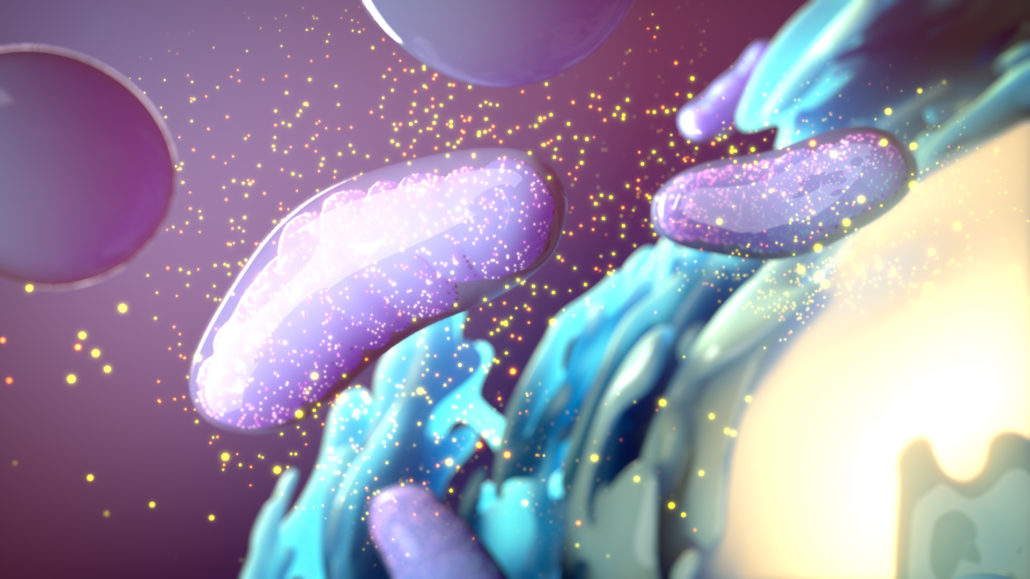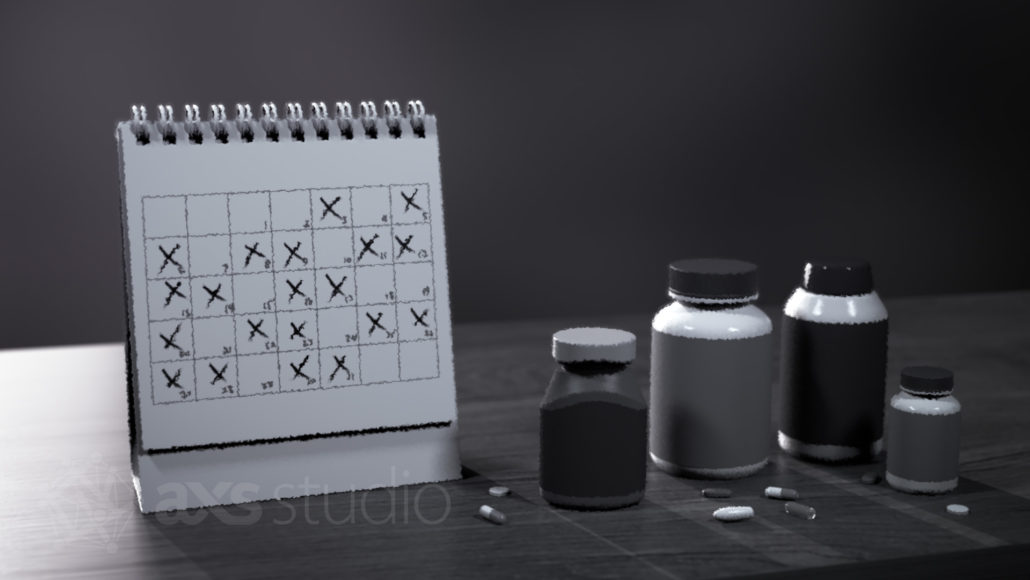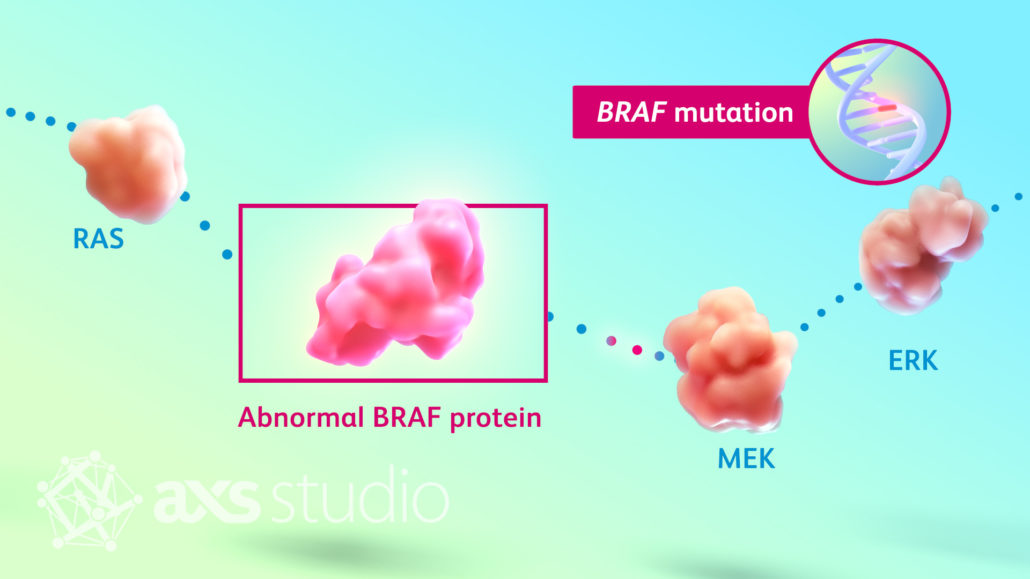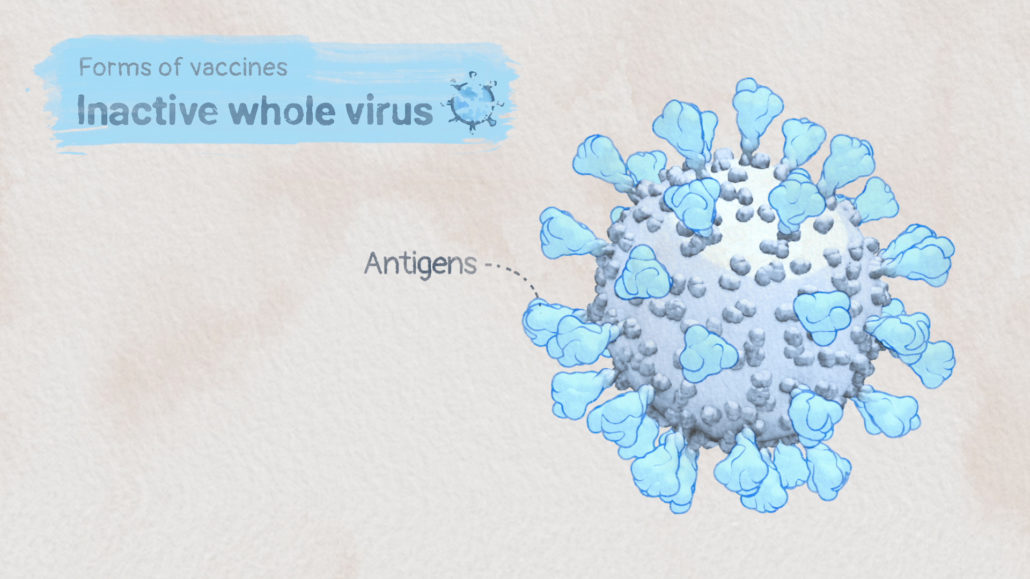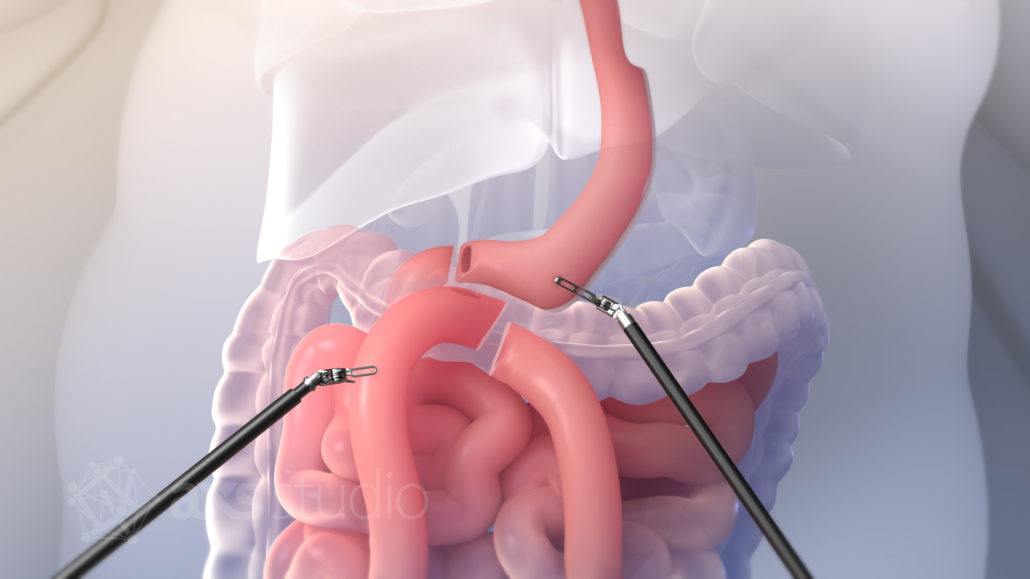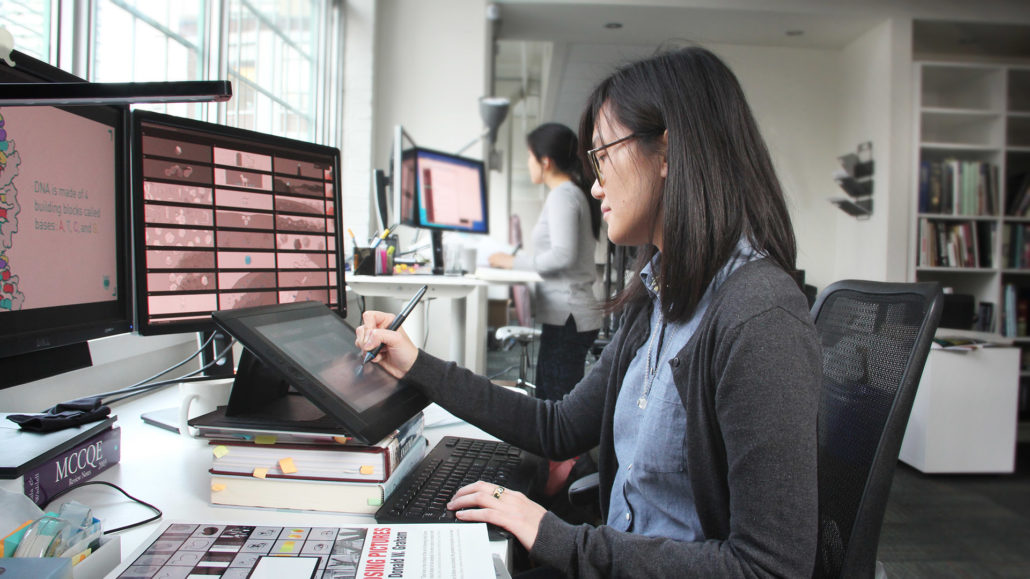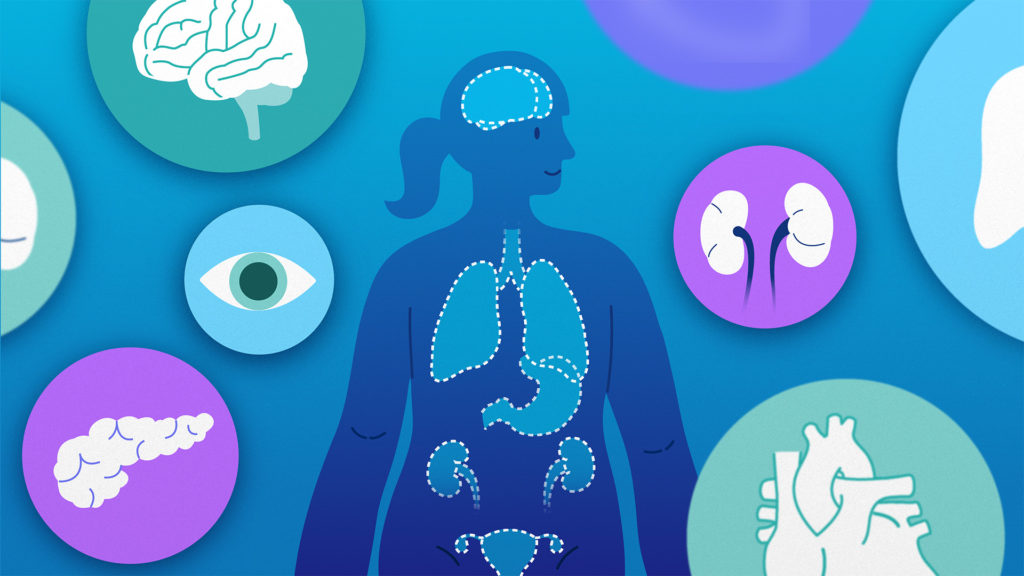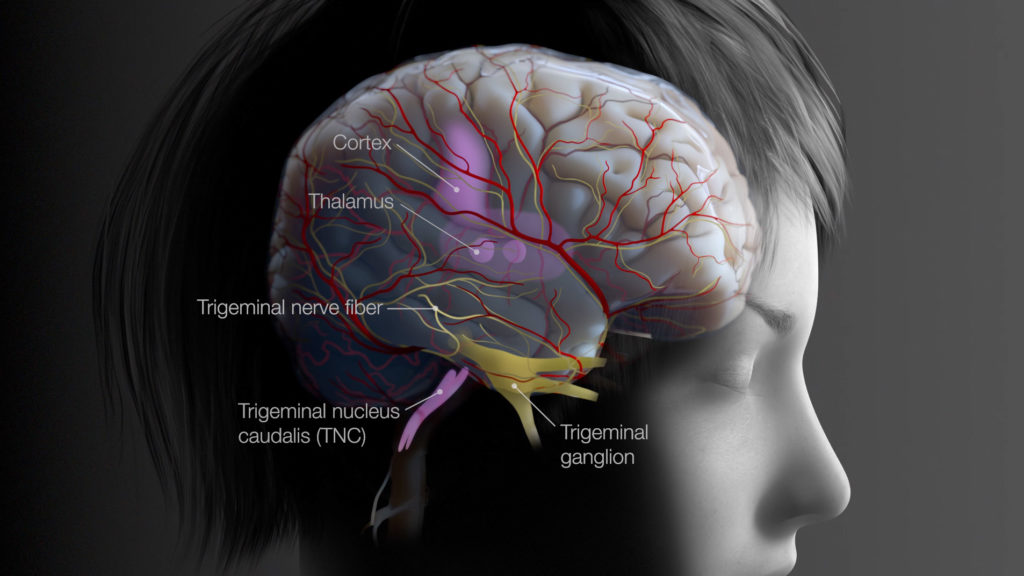All of us will become patients at some time in our lives. When encountering new medical information about our own health, or the health of someone we love, we need effective and engaging patient education. A tool such as a 3D animation video can enhance understanding of disease and treatment.
Medical animation can aid in patient adherence through narrative storytelling and clarification. Most patients are visual learners, and are more likely to retain information they experience in a visual narrative, as opposed to information they read or hear. A 3D animation video can help to clarify concepts surrounding their care in ways that words alone cannot convey. And not just any visuals will do; it’s important they are developed by trained and specialized medical animators.
Eye-catching 3D animation videos, such as this still from a scientific animation about photobiomodulation for the treatment of age-related macular degeneration, engage and entertain while providing valuable patient education.
Patients don’t adhere to prescribed medical care if they don’t understand the effects and stakes
Patient education is about more than satisfying a patient’s curiosity. It can have a real impact on whether or not they take their care seriously, whether it’s following a prescription medication schedule, or diligently doing their physiotherapy regimen.
The cost of neglecting patient education, and thus the cost of non-adherence to prescribed medical care, can be high–both to the individual and to societal costs. A 2024 British Pharmacological Society paper found that, “up to 125,000 premature deaths per year in the US and 200,000 in the EU can be related to non-adherence.” See our FAQ below for more.
Non-adherence to treatment can cost more than increased societal health costs; it can carry serious consequences for patients. Effective patient education helps people understand the stakes and methods of treatment, and gives them “buy-in” in adhering to their treatment.
Understanding the underlying science of a disease through a mechanism of disease (MOD) 3D animation video can help a patient feel grounded when discussion with their HCP turns to the need for treatment. Watching a 3D animation video, such as a mechanism of action (MOA) video or medical device procedure step-by-step video, may help patients feel a sense of control over their own treatment by knowing what’s happening next, and why.
The importance of visual learning in patient education
Verbal instructions from a doctor, or instructions on the side of a prescription bottle are a part of patient education, but can only do so much to aid in comprehension about treatment.
Through compelling art direction and an engaging narrative, 3D medical animators tap into patients’ capacity for visual learning. 3D animation videos offer flexibility and in-depth explanations in a way that other forms of patient education can’t achieve.
Knowledge is power, and can help patients feel some power and sense of control in their treatment. Having a 3D animation video explaining melanoma-causing BRAF protein mutations gives cancer patients a visual to help them understand the MOD. This can also help them to understand the MOA of a new treatment.
A 2024 study about visual-based interventions on health literacy found that:
“Visual-based interventions are effective tools for improving patients’ levels of comprehension. In particular, the adoption of video formats significantly augments comprehension compared to more traditional methods.”
How 3D medical animation video clarifies concepts for patients
Most of us have seen models of the inner ear or a cutaway heart in our doctor’s offices, and while 3D models can be effective in describing a procedure, they are static and do not illustrate changes through time on either the cellular or body-level. In contrast, 3D animation can show disease onset and treatment-ending states, and each step of care in-between.
In the past few years, we’ve all become used to patient education about viruses and vaccines. Having a common visual language representing real science helped initial uptake of COVID-19 vaccines.
Complicated medical concepts can be greatly simplified and explained clearly through 3D animation videos. The goals of patient education include giving clarity and reassurance to the patient. For example:
- Picturing microscopic protein pathways may be difficult for the lay person to imagine without expert art direction and narrative flow of a 3D animation video.
- Step-by-step footage of a successful surgery may also be startling and off-putting to people not used to seeing actual surgery. Instead, medical animators can depict surgical procedures in a simplified style that leaves out blood, incisions and other aspects of real surgical photos that may be too raw and upsetting to non-medical patients.
For the average patient, it may be hard to look at visceral photos of a surgery, especially if it involves their own care. Trained medical animators remove extraneous and unsettling details (like blood and other tissues), clarifying the procedure by focusing on the essentials.
For an in-depth look at the techniques animators use to capture attention and increase learning retention, see our comprehensive overview, Benefits of Using 3D Medical Animation Videos In Medical Education. In brief, animators have a number of techniques that aid understanding, while capturing the beauty and unfamiliar world of the body’s systems at micro and macro levels.
The importance of specialized 3D animation video services in patient education
There are a number of reasons why the high degree of rigor and accuracy from a dedicated medical animation studio is essential when developing a 3D animation video for patient education:
- Animators who are not medically trained depict important concepts and structures inaccurately, thereby misleading patients.
- The news media often oversimplifies medical headlines, sometimes to the point of inaccuracy.
- The increasingly popular use of generative AI platforms in place of internet searches are quite likely to contain critical misinformation and errors.
- Patients using “Dr. Google” may encounter an array of non-medical solutions. Even crowd-sourced information platforms such as Wikipedia, or WebMD may also contain errors, or the scientific terminology may make concepts unclear to the layperson.
Medical animators pour their passion for communication into helping people at their most vulnerable. An engaging and relatable start to a medical animation invites patients to project the medical scenario onto themselves.
Having a team trained in narrative storytelling as well as medical science ensures the message is clear, accurate, and engaging. That engagement is the key to aiding retention and adherence. A qualified medical animation studio will also strategically consider typical barriers to patient understanding, such as inclusive language, accessibility, and audience literacy.
Retention of medical information isn’t only an issue for patients. For example, the understanding of complex subject matter is vital for medical affairs teams to be able to communicate efficiently and credibly with busy healthcare professionals (HCPs), healthcare leadership and decision-makers. An effective video overview can often be re-focused to educate across medical affairs, HCP, and patient audiences alike.
Re-purposing key visual assets for different levels of medical education contributes to consistent understanding through the patient care pipeline.
Frequently asked questions
Yes! You can see some examples in our latest show reel, or in projects like CSF Donation for Alzheimer’s Disease Research and Robotic-Assisted Surgery.
Here are a couple of sources.
- The effectiveness of visual-based interventions on health literacy in health care: a systematic review and meta-analysis, E. Galmarini, L. Marciano, P.J. Schulz, PubMed Central, 2024.
- Creating visual explanations improves learning, E. Bobek, B. Tversky, PubMed Central, 2016.
As noted back in a 2005 paper by L. R. Martin, et al, “In some disease conditions, more than 40% of patients sustain significant risks by misunderstanding, forgetting, or ignoring healthcare advice.” Medical non-adherence can cost countries billions annually through lost productivity, and additional healthcare procedural costs.
Yes. Not every situation requires a 3D animation video to explain a health concept or treatment procedure. Sometimes static 2D medical illustrations, either standalone or in sequence, may be enough for effective patient education. On the other hand, to really engage and increase retention, interactive experiences, such as games or extended reality experiences (AR/VR) may be effective, especially in a hard-to-focus space such as a medical conference.
2D medical animation has also proven very useful for patient education. Here are two patient education websites that employ 2D animation videos effectively:
Generally, 3D animation videos are effective at enhancing patient education, and the 3D assets created out of such a project can be useful for both still images and adapting as part of an expanded VR experience, if that is a goal for a life sciences team.


